

Yes, You Can Clean Your Washing Machine Using Just Vinegar—Here's How
source link: https://www.yahoo.com/lifestyle/yes-clean-washing-machine-using-210000928.html
Go to the source link to view the article. You can view the picture content, updated content and better typesetting reading experience. If the link is broken, please click the button below to view the snapshot at that time.

Yes, You Can Clean Your Washing Machine Using Just Vinegar—Here's How
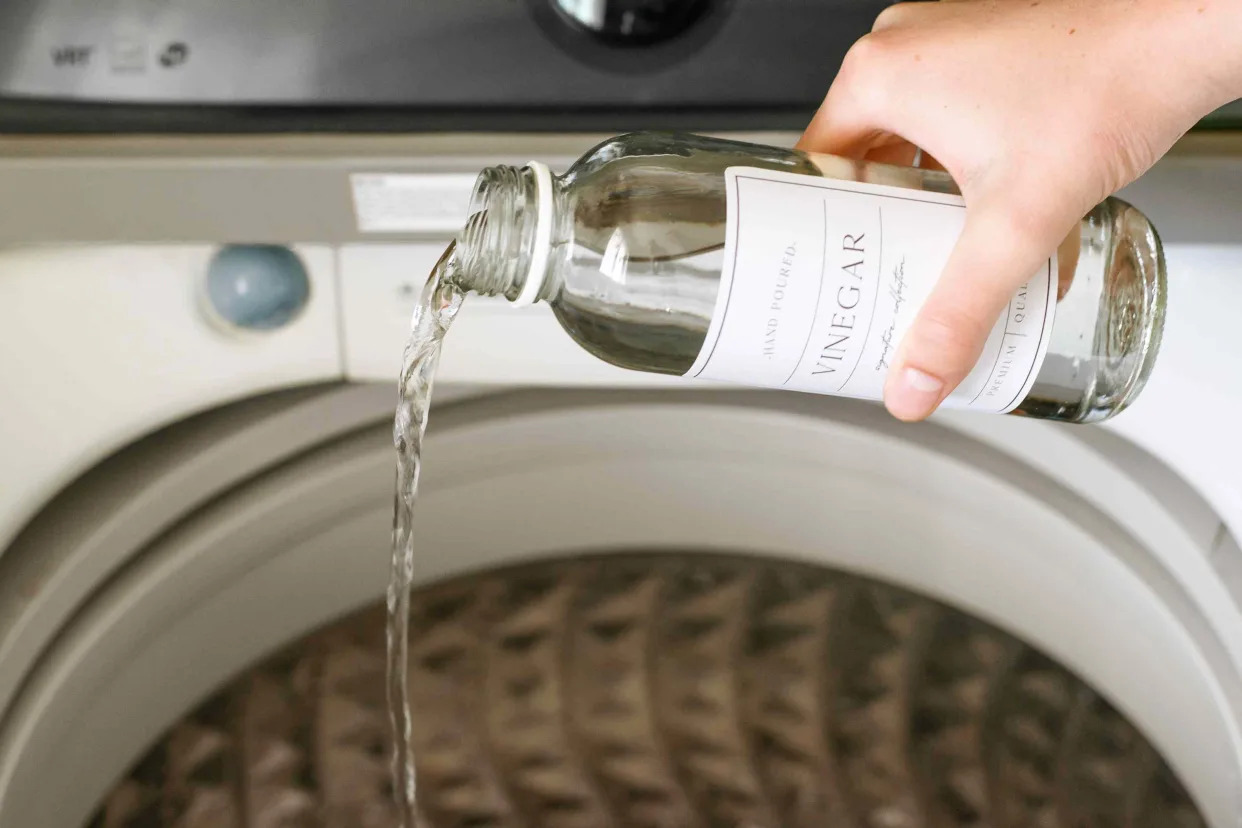
The Spruce / Sarah Lee
A washing machine traps detergent and fabric softener residue, mineral deposits from water, and soil each time you wash a load of laundry.
Eventually, that trapped build-up will redeposit onto your laundry leaving it dingy and smelling less than fresh.
Regularly cleaning your washing machine will give you cleaner laundry and extend the life of your machine. Here's how to clean every type of washing machine with vinegar.
Why Vinegar Works Well to Clean a Washing Machine
Distilled white vinegar and cleaning vinegar contain acetic acid that helps dissolve minerals that build up in washer drums and hoses. The acid also helps kill bacteria and fungi that cause odors. Vinegar, when diluted, will not harm clothing and easily rinses away during the washer's rinse cycle.
How to Clean a Top Loading Washer With Vinegar
Empty the Washer and Set Controls
Be sure any automatic dispensers are empty of detergent, bleach, and fabric softener and that the washer drum is empty. Set the water temperature to hot water. Select the largest load setting and the longest wash cycle available.
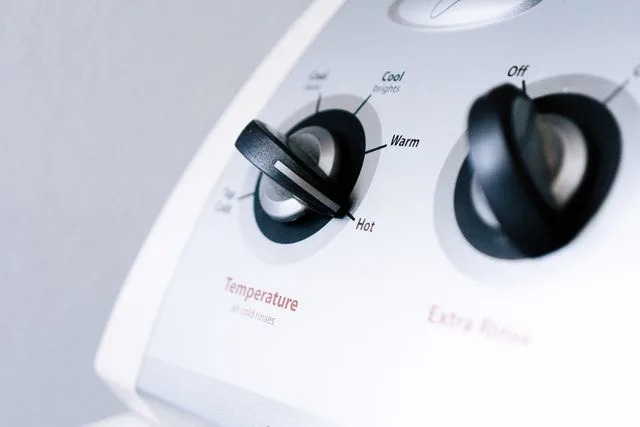
The Spruce / Jorge Gamboa
Add the Distilled White Vinegar
Pour two cups of distilled white vinegar into the drum and allow the machine to run through the entire hot water cycle.
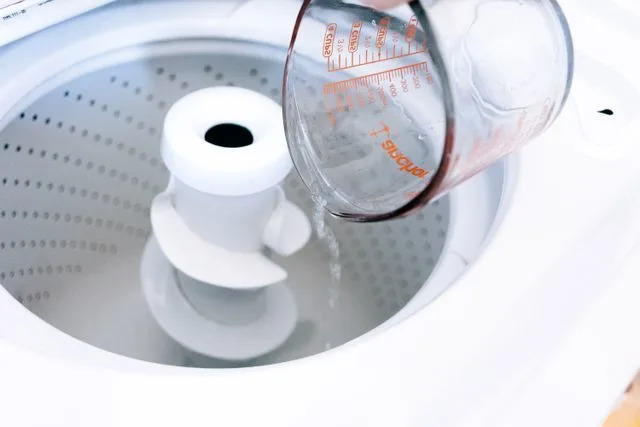
The Spruce / Jorge Gamboa
Check and Clean Automatic Dispensers
Check the automatic dispensers for any remaining build-up. If the dispensers are removable and need further cleaning, wash them in hot, soapy water, rinse, and replace them.
If there is build-up and the dispensers are not removable, heat 1 cup of distilled white vinegar in a microwaveable cup or a small pan on the stovetop. It should be very warm but does not need to be boiling.
Pour the heated vinegar into the dispensers, and allow it to sit for at least 15 minutes to loosen any residue. Use an old toothbrush or small bottle brush to remove any remaining residue that you see in the dispensers and run a rinse cycle to flush it all away.
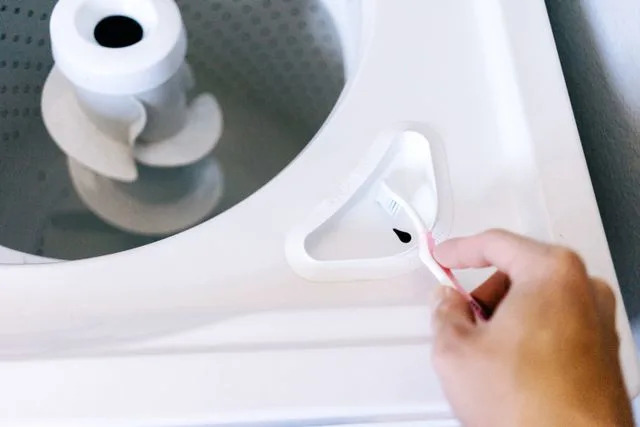
The Spruce / Jorge Gamboa
Clean the Outside of the Washing Machine
To clean the outside of the washer, mix a solution of warm water and a few drops of dishwashing liquid.
Dip a microfiber cloth in the solution, and wring out most of the water to wipe away dust, grime, and laundry product drips from the top and sides of the washer. Pay extra attention to knobs and electronic panels.
Open the lid and dip an old toothbrush into the soapy water to get into corners and tight places on the lid.
The Spruce / Jorge Gamboa
How to Clean a Front Loading Washer With Vinegar
Empty the Dispensers and Add Vinegar
Check the automatic dispensers and be sure they are empty of detergent, bleach, and fabric softener and that the washer drum is empty. Add two cups of distilled white vinegar to the detergent dispenser. If the dispenser isn't large enough to hold all of the vinegar, add the remainder directly to the washer drum.
The Spruce / Ulyana Verbytska
Select Cycle and Water Temperature
Many front-loading washers have designated cleaning cycles and you should choose it if that is an option. If not, select the longest wash cycle, largest load size, and hot water.
The Spruce / Cristina Tudor
Clean the Dispenser Drawer
If possible, remove the dispenser drawer to check for and remove laundry product build-up that can cause odor and allow mildew to grow. Your washer's user manual or manufacturer's website will have instructions.
Rinse the drawer and inserts in hot tap water to remove traces of accumulated powders and liquids. If they are heavily coated with built-up residue, let them soak for 10 minutes in hot water, then rinse. Allow the drawers to air-dry.
Use a small soft brush to clean the drawer opening on the washer. When the drawer and inserts are clean, return the bleach and fabric softener inserts to their proper compartments and replace the dispenser drawer.
The Spruce / Olivia Inman
Clean the Washer Door Gasket
The gasket that assures a tight seal in a front load washer also traps soil, detergent residue, and moisture which are the perfect breeding ground for mold.
After running a cleaning cycle, dampen a cloth with a mixture of 50 percent water and 50 percent distilled white vinegar. Use your fingers to gently peel the gasket from the glass and wipe the inside of the gasket to remove any debris or mold.
Use a dry microfiber cloth to dry the inside of the gasket. Use the vinegar and water solution to wipe down all of the door edges.
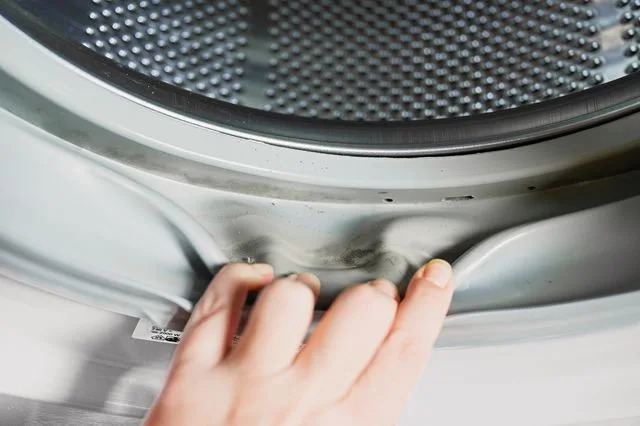
The Spruce / Cristina Tudor
Run a Final Rinse Cycle
After cleaning the automatic dispensers and the door gasket, run a final quick rinse cycle to flush away any debris trapped in the washer.
Clean the Outside of the Washer
While the rinse cycle is running, use a microfiber cloth dipped in hot, soapy water—use an all-purpose cleaner or a few drops of dishwashing liquid—to wipe away dust, dirt, and product drips from the outside of the washer.
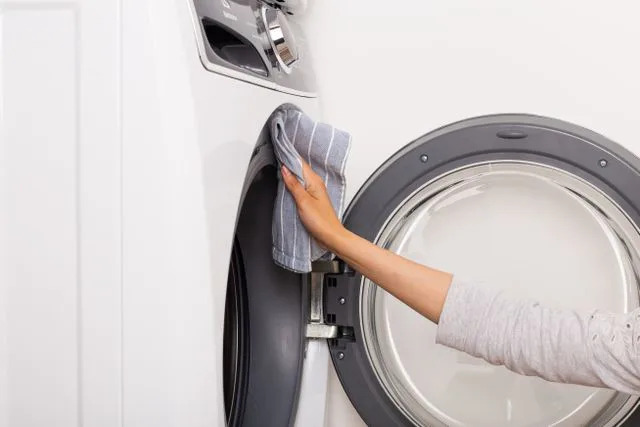
The Spruce / Olivia Inman
Should I Use Bleach or Vinegar to Clean My Washing Machine?
Distilled white vinegar is not as effective at killing bacteria and fungus as chlorine bleach, especially when diluted with the water required to run a washing machine cycle.
Undiluted vinegar can dissolve hard water deposits but the acid can also damage some rubber washer components like hoses and gaskets.
Before cleaning any washer, especially a new one, read the manufacturer's recommendations for cleaning. The use of vinegar for cleaning may void some machine warranties.
Additional Tips for Cleaning a Washer with Vinegar
A standard top-load washer should be cleaned at least four times per year, especially if you live in a hard water area.
High-efficiency top-load washers and front-load washers use much less water than standard machines and should be cleaned every month. Clean twice a month if you wash exceptionally heavily soiled clothes or live in a hot, humid area where mold grows quickly.
Detergent and fabric softeners may build up in the dispenser drawers and cause odor and operational problems. Residue should be removed once or twice a month.
After running a load of clothes through your front-load washing machine, you should leave the door open so it can air dry to prevent mold and odors from developing.
To keep a washer clean longer, use the right amount of detergent. More is not always better because it leaves build-up in the washer.
Read the original article on The Spruce.
Recommend
About Joyk
Aggregate valuable and interesting links.
Joyk means Joy of geeK